Vaccinated travelers in Chile can skip quarantine with a test on arrival

Oct 7, 2021 • 3 min read

Chile is giving people the option to skip quarantine if they present a second negative COVID-19 test ©Lara Henriquez (Newlink)
A week after opening its borders to international visitors, Chile is changing its entry requirements again. From November, the recently-introduced five-day quarantine period will be scrapped for vaccinated travelers who take a second negative COVID-19 test on arrival.
Some of the world's best hiking trails—through deserts, volcanoes and snow-capped peaks—will soon be available to tourists as Chile opens up to tourists, just in time for summer in the southern hemisphere. And while there are plenty of new attractions to look forward to, including a new UNESCO site , there are a few steps to consider before traveling there, regardless of your COVID-19 status.

All travelers are required to fill in the Travelers Affidavit no later than 72 hours before traveling. Under new rules announced today, visitors have the option to complete the full five-day isolation period announced in September or temporarily isolate while awaiting the results of a COVD-19 PCR test, which can only be taken in Chile.
In both cases, travelers will need to get their vaccination certificate validated by the Chilean health ministry through the mobility pass app before traveling to Chile, a process that could take about a month. Chile's public health secretary Paula Daza has warned travelers not to book their trip until that step is completed to avoid the potential hassle of rescheduling flights.
We are happy! As of October 1st our borders reopen for international visitors. Chile is Back! Plan your trip following the rules and sanitary measures. Find out everything you need to know before traveling here https://t.co/FlML9y1VVk pic.twitter.com/1d3tKBwqfu — Chile Travel (@chiletravel) September 16, 2021
Vaccines the Chilean Health Department is currently accepting include Moderna, Pfizer, Johnson & Johnson, AstraZeneca, Sinopharm, Sinovac, CanSino and Sputnik V.
In addition to testing, travelers will need to take out health insurance with a minimum coverage of $30,000 USD to cover any medical expenses should they contract COVID-19 on their trip. Once they're in Chile, a tourism spokesperson said "every person must comply with the traveler’s follow-up process, which is done over a period of 14 days and consists of daily self-reporting of health status, current location, and testing" through the mobility pass.

Chile has reported a successful immunization campaign with almost 87% of the eligible population fully vaccinated, according to the health ministry .
When borders reopen, visitors will be permitted entry through dedicated airports in the capital Santiago , the beach resort of Iquique , and Antofagasta , the gateway to the Atacama Desert . American Airlines is improving connectivity between the US and Chile by launching direct flights between New York and Santiago this month.
There are also plenty of exciting attractions for travelers to enjoy too. Earlier this year, Chile added its seventh UNESCO site: Arica and the mummies of Chinchorro . The Chincorro people are believed to be the world’s oldest ancestral civilization and their mummies date back some 7000 years, meaning they pre-date the Egyptian mummies by two millennia. The glass-protected mummies can be viewed at a smaller version of the anthropological Museum of San Miguel de Azapa , just outside Arica , before a new and larger version of the museum opens in 2024.
You might also like: The best time to go to Chile 10 things to do in Patagonia Can’t-miss cuisine in South America
This article was first published Sep 16, 2021 and updated Oct 7, 2021.

Explore related stories

Astrotourism
Dec 27, 2023 • 8 min read
Spectacular things are happening in the skies all over the world in 2024. Read on for a year-long guide to where you will want to look up.

Dec 8, 2023 • 6 min read

Dec 1, 2023 • 6 min read

Nov 18, 2023 • 7 min read

Nov 6, 2023 • 8 min read

Sep 26, 2023 • 7 min read

Sep 23, 2023 • 7 min read

Sep 21, 2023 • 7 min read

Sep 17, 2023 • 7 min read

Aug 23, 2023 • 4 min read
- Search Please fill out this field.
- Manage Your Subscription
- Give a Gift Subscription
- Newsletters
- Sweepstakes
Chile Changes Travel Entry Requirements Due to Omicron Variant — What to Know
Due to the omicron variant, travelers from several Southern African nations have been barred entry to Chile.
Meena Thiruvengadam is a lifelong traveler and veteran journalist who has visited more than 50 countries across six continents. Her writing has appeared in The Wall Street Journal , Departures , TripSavvy , and other publications.
:max_bytes(150000):strip_icc():format(webp)/Meena-Thiruvengadam-0953f29450f840a786278802ac6a8162.jpeg)
Due to the omicron variant, Chile has changed its entry requirements once more.
Non-resident foreigners entering the country will need to abide by several requirements. Travelers over the age of 6 must be fully vaccinated with two doses of an approved vaccine and must upload their vaccination status to the Chilean health department. Approval of vaccination status may take up to 30 days. Upon arrival into the country, all travelers over the age of 2 must present a negative PCR test taken within 72 hours. All travelers must have health insurance with minimum coverage of $30,000 USD that includes all COVID-related coverage. Finally, all those entering Chile must undergo a mandatory PCR test performed upon arrival to Chile and a quarantine of five days or until a negative result of the PCR or antigen is obtained, according to the Chilean government's official travel site.
In addition to the new requirements, Chile will also suspend entry to travelers who have been in South Africa, Zimbabwe, Namibia, Botswana, Lesotho, Eswatini, and Mozambique for 14 days.
Initially, when the country opened to fully vaccinated visitors, there was a five-day quarantine protocol in place.
Chile twice closed its borders during the pandemic, first in March 2020. It reopened in late November before closing again in April 2021 as the new variants emerging around the world pushed countries to rethink their policies. Most recently, in November of 2021, Chile required a negative PCR test and vaccine approval but did not require vaccinated travelers to test again upon arrival, as stated by the State Department .
Chile's latest reopening comes as the government reports nearly 93% of the country's population has been vaccinated against COVID-19. The volume of new COVID-19 cases in the country has been steadily declining since June, according to the World Health Organization .
Meena Thiruvengadam is a Travel + Leisure contributor who has visited 50 countries on six continents and 47 U.S. states. She loves historic plaques, wandering new streets and walking on beaches. Find her on Facebook and Instagram .
Related Articles
We’re sorry, this site is currently experiencing technical difficulties. Please try again in a few moments. Exception: request blocked

- Huasco Valley
- San Pedro de Atacama
- Elqui Valley
- Antofagasta
- Limarí – Fray Jorge National Park
- Bahía Inglesa
- Alto El Loa
- La Serena and Coquimbo
- Copiapó Valley
- Tagua Tagua – Almahue Valley
- Alto Colchagua Universidad Glacier
- Cachapoal Valley
- Portillo Ski Resort
- Pirque and Maipo Valley
- Aconcagua Valley
- Valle Nevado Ski Resort
- El Colorado Ski Resort
- Curicó Valley
- Maule Valley
- San Antonio/Leyda Valley
- Colchagua Valley and Santa Cruz
- Casablanca Valley
- Viña del Mar
- Cajón del Maipo
- Robinson Crusoe Island
- Rancagua and Sewell
- La Parva Ski Resort
- Rano Raraku
- Llanquihue Lake
- Chillan Ski Resort
- Puerto Montt
- Osorno and Puyehue
- Valdivia and Corral
- Pucón and Villarrica
- Panguipulli
- Temuco and Lago Budi
- Arauco Territory
- Puerto Varas
- Chilean Antarctic Destination
- General Carrera Lake
- Tierra del Fuego
- Coyhaique and Puerto Aysén
- Carretera Austral
- Torres del Paine
- Puerto Natales
- Punta Arenas
- Family recreation
- Coastal beaches
- Lakeside Beaches
- Hot Springs
- Spa and relaxation
- Patagonian cruises
- Lake sailing
- International cruises
- Visits to observatories
- Astronomical facilities
- Indigenous Peoples and Ethnotourism
- World Heritage Sites
- Archaeology
- Paleontology
- Poetry and Literature
- Typical gastronomy
- Gastronomy of the world
- Hiking y trekking
- Skiing and snowboarding
- Mountainbike
- Horseback Riding
- Mountain and rock climbing
- Sport fishing
- Kitesurfing and water sports
- Ice walking
- Overland 4×4
- Paragliding and aerial sports
- Wildlife watching
- Landscape photography
- National Parks
- Bird Watching

Chile eliminates COVID-19 requirements for entry into the country
By: Hernan Claro - 18 May, 2023

Through the Ministry of Health, the Chilean government has confirmed that health requirements associated with COVID-19 will be eliminated during entry into our country. Great news for you and all travelers looking to explore our territory!
The “ Plan Fronteras Protegidas” (Protected Borders Plan) ceased to apply on May 9 th . This means that the request for a PCR test and random testing on entry into Chile is eliminated.
In addition, you should know that a valid vaccination certificate will not be required at the time of entry into Chile.
With this change in Chile’s entry requirements, more than 3,500,000 foreign tourists are expected to arrive in 2023.
Health recommendations
The Ministry of Health indicated that, although the COVID-19 epidemiological scenario is on the decline, the circulation of other respiratory viruses is accelerating as winter approaches.
The recommendation is to keep vaccinations up to date, both against COVID-19 and influenza, and to maintain the self-care measures acquired during the pandemic : frequent hand washing, ventilation of enclosed spaces, and the use of masks when showing respiratory symptoms.
Get inspired and explore Chile
Without health restrictions, it’s time to travel to Chile from north to south and marvel at its world-class cities and natural attractions.
If you are looking for inspiration before starting your adventure , we recommend you visit Chile Travel’s Travel Diary . You will find recommendations according to the season when you want to come to our country and the latest trends.
On the other hand, you can search for the destination and experience that best suits you at Itineraries.
If you liked this article, please share it:
Articles that may interest you

Security Alert May 17, 2024
Worldwide caution, update may 10, 2024, information for u.s. citizens in the middle east.
- Travel Advisories |
- Contact Us |
- MyTravelGov |
Find U.S. Embassies & Consulates
Travel.state.gov, congressional liaison, special issuance agency, u.s. passports, international travel, intercountry adoption, international parental child abduction, records and authentications, popular links, travel advisories, mytravelgov, stay connected, legal resources, legal information, info for u.s. law enforcement, replace or certify documents.
Share this page:
Chile Travel Advisory
Travel advisory july 17, 2023, chile - level 2: exercise increased caution.
Reissued with obsolete COVID-19 page links removed.
Exercise increased caution in Chile due to crime and civil unrest.
Country Summary : Street crime (e.g., muggings, pick-pocketing, theft) is common in Chile. Rates of violent crime, such as assaults, homicide, carjackings, and residential break-ins, are increasing.
Large-scale demonstrations periodically occur in Santiago and other cities in Chile. Demonstrations can take place with little or no notice, and often result in disruptions to transportation, including public bus and Santiago metro services.
Read the country information page for additional information on travel to Chile.
If you decide to travel to Chile:
- Do not leave luggage unattended, even in locked vehicles.
- Always carry a copy of your U.S. passport and visa (if applicable). Keep original documents in a secure location.
- Avoid demonstrations.
- Follow the instructions of local authorities including movement restrictions and obey all curfews.
- Find a safe location and shelter in place if in the vicinity of large gatherings or protests.
- Review the Country Security Report for Chile.
- Enroll in the Smart Traveler Enrollment Program (STEP) to receive Alerts and make it easier to locate you in an emergency.
- Follow the U.S. Embassy and Department of State on Facebook , Instagram, and Twitter .
- Prepare a contingency plan for emergency situations. Review the Traveler’s Checklist .
- Visit the CDC page for the latest Travel Health Information related to your travel.
Travel Advisory Levels
Assistance for u.s. citizens, search for travel advisories, external link.
You are about to leave travel.state.gov for an external website that is not maintained by the U.S. Department of State.
Links to external websites are provided as a convenience and should not be construed as an endorsement by the U.S. Department of State of the views or products contained therein. If you wish to remain on travel.state.gov, click the "cancel" message.
You are about to visit:
Chile to become first country in Latin America to offer fourth COVID shot
- Medium Text

Sign up here.
Reporting by Natalia Ramos; Writing by Carolina Pulice; Editing by Marcelo Rochabrun and Cynthia Osterman
Our Standards: The Thomson Reuters Trust Principles. New Tab , opens new tab

World Chevron
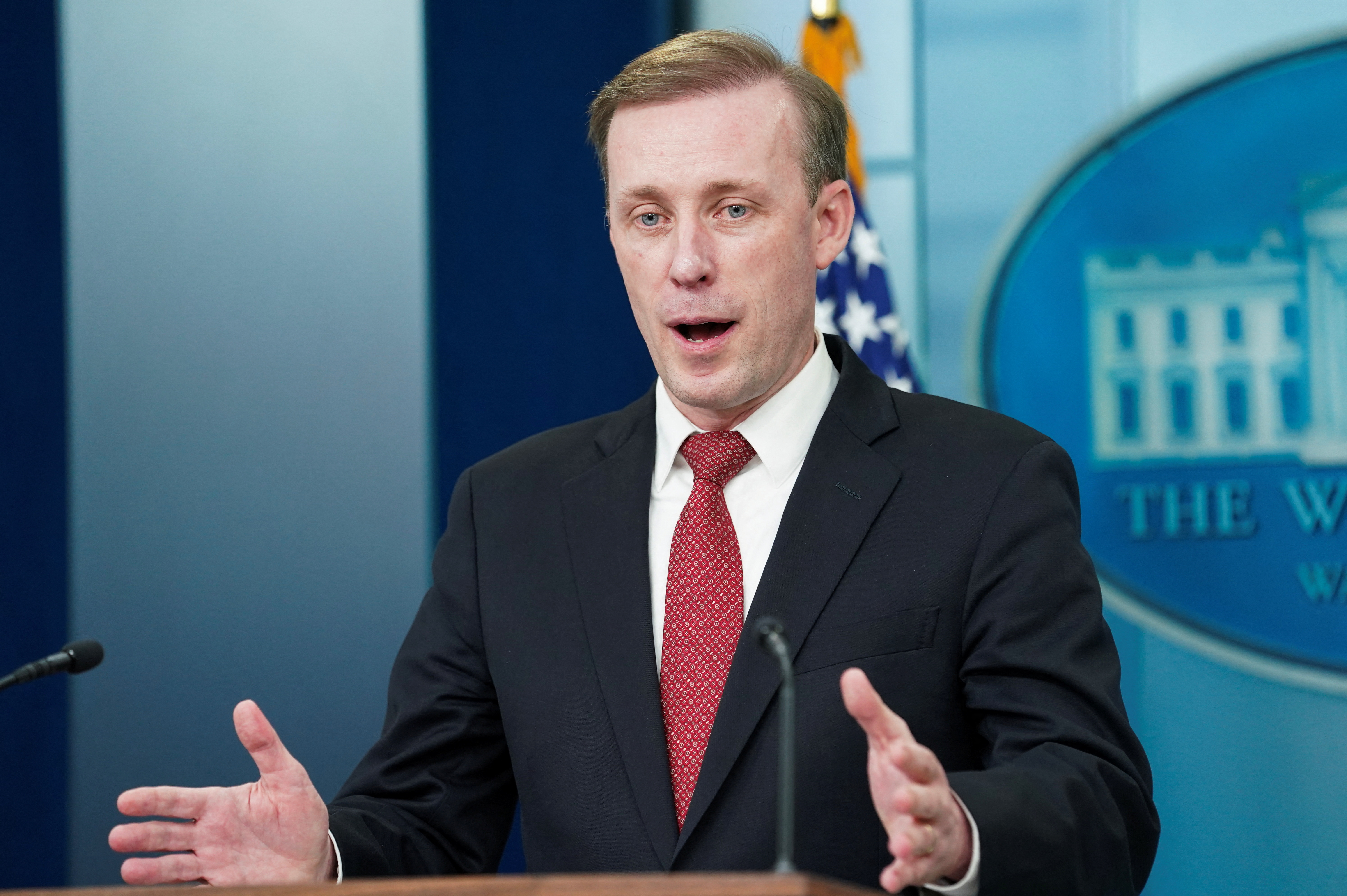
Saudi crown prince, US national security adviser meet on Gaza, bilateral deal
Saudi Crown Prince Mohammed bin Salman and White House National Security Adviser Jake Sullivan met to discuss a broad bilateral agreement and Israel's war in Gaza, the Saudi state news agency reported on Sunday.
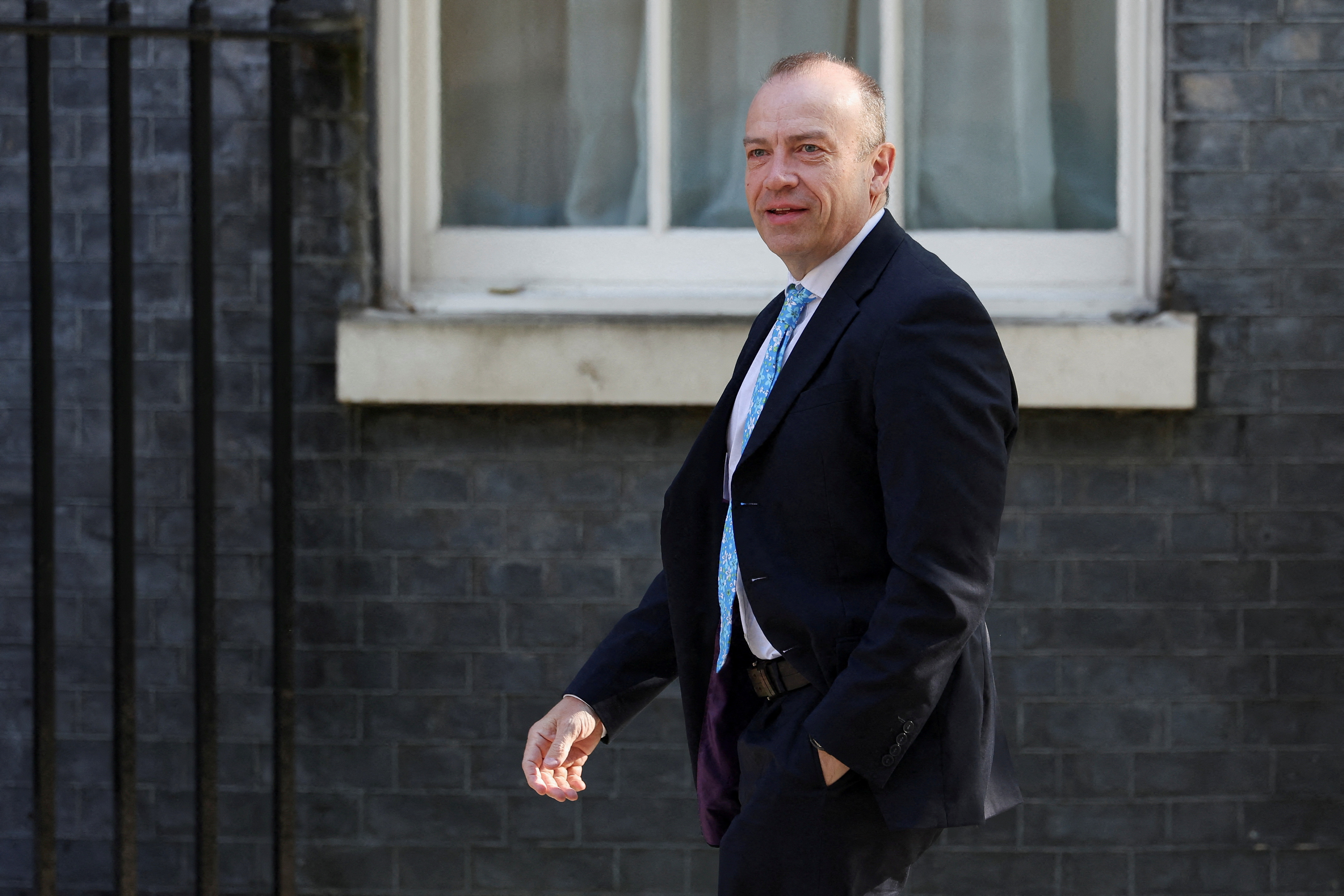
An official website of the United States government
The .gov means it’s official. Federal government websites often end in .gov or .mil. Before sharing sensitive information, make sure you’re on a federal government site.
The site is secure. The https:// ensures that you are connecting to the official website and that any information you provide is encrypted and transmitted securely.
- Publications
- Account settings
Preview improvements coming to the PMC website in October 2024. Learn More or Try it out now .
- Advanced Search
- Journal List
- v.9; 2021 Dec
The successful COVID-19 vaccine rollout in Chile: Factors and challenges
As the COVID-19 pandemic continues causing problems around the world, Chile is facing a new episode of increasing cases and deaths. However, at the same time, the country has succeeded in providing vaccines for an important part of its population over a short period.
What are the factors behind this successful process? What are the challenges faced by the country today? This article explores potential explanations for the “Chilean paradigm”, regarding the COVID-19 vaccine rollout. Borrowing from implementation science frameworks, the analysis proposed an alternative explanation—based on multiple actors, approaches, and history—as opposed to one in which the outcome is due mainly to the government’s performance.
The rapid and extensive coverage of vaccination can be explained by the role played by the government and the academia in securing vaccines through a pragmatic approach; the capacity built at local level, as well as the coordination between the health system and local authorities; and favorable vaccine culture, developed through the implementation of the National Immunization Program. Short and long-term elements (such as investment in infrastructure and relationships between stakeholders, and actions carried out during the pandemic), as well as contextual factors (such as the political and socioeconomic context), provide a more complex story to explain the observed outcomes.
While other countries could try to follow the Chilean example, the article shows that short-term actions are necessary but might not be sufficient to achieve results. At a global level, the situation calls for rethinking how countries will face these global challenges, including issues such as international cooperation and global health governance.
Introduction
Chile has been hit by the COVID-19 disproportionately compared to other countries. In 2021, the country is still among the most affected countries in the world in terms of cases and deaths [1] . As the country was still struggling with the 2020 wave, cases started to increase in January 2021; while the country’s peak of daily cases reached almost 7,000 in June 2020, during 2021 these figures already surpassed the 9,000 cases per day in April 2021 [2] .
It was in this scenario that the country faced the availability of COVID-19 vaccines. Like many other countries, the new vaccines became a symbol of hope but also a public policy challenge, since they represented an opportunity to meet their population’s needs after a year 2020 plagued by problems.
In December 2020, Chile announced the arrival of the first shipment of vaccines and a vaccination schedule that would eventually cover most of the country [3] . This process was centrally planned and comprised the definition of priority group and a detailed calendar in which people on each group should receive the first dose [4] , [5] . The strategy was based on international recommendations, as well as the opinions from an external Expert Advisory Committee [6] , [7] .
Chile constitutes an interesting case study. First, it is a developing country, geographically isolated, and that relies on imports to satisfy the demand for vaccines. Today, the country represents a paradox. Chile is still one of the countries with more cases and deaths per capita [1] . However, and despite the adverse context—including geographical, economic, and political environment—, the country has achieved relatively high coverage of COVID-19 vaccination in a short period [8] . The mass COVID-19 vaccination campaign started in February 2021, and by July 26, more than 24 million doses have been administered, which represents 63.07% of the total population fully vaccinated [9] . Countries with similar populations in the region have lower coverage, such as Ecuador (11.43%) or Guatemala (1.68%). Countries with a human development index similar to Chile's (0.851) have lower coverage, such as Uruguay (61.2%), Portugal (49.9%), Panama (15.81%) and Argentina (12.98%). Other countries in the region have lower coverage, such as Mexico (18.31%), Brazil (17.42%) or Peru (13.18%). Chile's coverage is above that of developed countries, such as the United Kingdom (54.43%), Spain (54.32%) or the United States (48.57%). [10] , [11] .
The aim of this article is to identify the elements behind the country’s successful COVID-19 rollout as well as lessons and challenges derived from this process. The analysis is relevant to many countries today—as they keep searching for strategies to cope with the second year of the COVID-19 pandemic and the challenge of implementing a large-scale vaccine rollout—and in the coming years—as new variants develop and uncertainty about the vaccination strategy increases [12] , [13] .
Material and methods
The successful vaccine rollout in Chile has attracted international attention, mainly considering the difficulties that many countries still face in securing vaccines for their people [14] . What explains this apparently unexpected success?
One reason that has been used to explain the phenomenon lies in the government’s strategy and its proactive role in foreseeing the need to ensure enough doses to cover the whole country [11] , [15] . However, limiting the observed outcome to this explanation is an unnecessary reduction of reality, and it is simply wrong. Although the government’s actions in this process need to be acknowledged, we present a broader explanation in which the government is not the sole responsible for the results, and where the actions carried out during the past months are not the only ones that explain the outcome.
Here, we expand the government’s management theory to one that includes more actors as well as a longer process behind the vaccine rollout success, instead of limiting it to the initiatives performed during 2020.
Borrowing from implementation science frameworks, we propose an explanation that includes the roles and interactions between different components of the intervention—provider, implementation, recipient, and environment—as an explanation for the observed outcome [16] . Fig. 1 represents this broader picture in which different actors—government, academia, the health system, local authorities, and the people—interact in contributing to the observed outcome. For each one of these actors, a role and a particular approach is identified to understand their contribution in the COVID1-9 vaccine rollout. In line with the proposed framework, we consider both implementation components and implementation time in the analysis.

Map of stakeholders, roles, and approaches in the vaccine rollout in Chile.
Regarding the implementation components—provider, intervention, recipient, and environment—, the intervention was defined as the vaccine rollout, while the main provider, i.e. the one who designed the implementation is the national government. As we explore in the analysis, the intervention also has providers at different levels. As for the environment, it is necessary to consider the socioeconomic and political context in which the intervention is carried out. In the case of Chile, the social context has been heavily shaped by the social outbreak that started in October 2019 [17] ; on the other hand, the political environment, including the process to change the Constitution and the recent elections [18] . Finally, some institutional aspects of the country, notably centralized decision-making process, are also included as relevant to understand some of the results [19] . This is particularly useful to establish comparisons with other countries.
In terms of the time of implementation, the study consider actions carried out by different actors in the short and the long-term, i.e. initiatives developed to as part of the COVID-19 vaccination process—mostly carried out during 2020 and 2021—, as well as other relevant processes that have been occurring in the past decades.
The analysis is based on official documents issued by the government, as well as media sources published during 2020 and 2021.
Following the scheme depicted in Fig. 1 , the analysis is presented looking at the specific contributions of the three group of key actors identified. In each case, their role and approach is explained.
Pragmatism in procurement: Government and academia
Within this strategy, the key approach was pragmatism. This approach was manifested through the country’s goal of obtaining as many vaccine doses as possible, regardless of where they came from [20] . In this line, two main players were behind the successful procurement process: first, academic institutions that ensured doses by partnering with laboratories to perform vaccines’ clinical trials in the country and; second, the government that decided to diversify the pool of agreements with potential providers.
Regarding the first point, Chile was offered to host clinical trials to different laboratories; finally, four laboratories ended up carrying out trials in the country: Sinovac partnered with the Universidad Católica, Oxford-AstraZeneca and Janssen developed clinical studies in the country in agreement with the Universidad de Chile, and CanSino-Laval developed the clinical studies with the Universidad de la Frontera [21] . Here, it is important to highlight that each one of the partners all had a network of public health centers, which allowed them to recruit potential volunteers. In this case, this group of universities contributed to the availability of vaccines and their successful implementation by promoting collaboration with the pharma industry, essentially trading access to vaccines for research and facilitating the development of clinical trials [21] .
On the other hand, the government also played a role in the procurement strategy. In this case, the country used a strategy of diversification of providers, purchasing as many vaccines from as many providers as possible [22] . Although there is no information on the contracts and prices paid for each vaccine, the Government of Chile has recognized agreements with Sinovac, Pfizer-Biontech, Oxford-AstraZeneca, and Janssen, as well as agreements on the provision of doses through COVAX, an initiative led by several international organizations aimed to provide a more equitable access to COVID-19 vaccines [22] , [23] . It has been pointed out that there are pre-agreements with Sinopharm, CanSino, the Serum Institute, and the Gamaleya Institute for Sputnik V [22] .
Data reported by international sources show that Chile would be the country with the highest number of doses assured per capita, with more than 200% of doses with respect to the population [24] . In both cases—universities’ partnership and government’s agreements with the industry—pragmatism was the guiding principle. In geopolitical terms, the country used the principle of active non-alignment, i.e. buying vaccines regardless of the laboratory’s features, including different management/ property nature (public or private) and country of origin. Hence, the country reached agreements with a state-owned Chinese laboratory (Sinovac), as well as private ones from different countries: United States-Germany in the case of the Pfizer-Biontech alliance; Oxford-AstraZeneca from England; Serum Institute from India; China-Canada in the case of CanSino, and Gamaleya Institute - Sputnik V from Russia [22] . The country’s political and social context—starting with the social outbreak in October 2019 and followed by the entry of the COVID-19 into the country—, and the fact that Chile has a centralized government, provided a strong motivation (improve the low population approval) and means (quick decision-making, national-level standards, and guidelines) for the government to perform well [11] .
Fig. 1 also establishes the existence of short and long-term actions carried out for these players. The short-run activities have been highlighted as the “proximal cause” of the outcomes: the government made agreements with several laboratories, and universities secured doses through clinical trials. However, there are “distal causes” that made these short term actions possible: a long list of bilateral and multilateral agreements between Chile and several countries points out more of a success of the Chilean diplomacy (over decades) than the single efforts of the current authorities; similarly, the agreements in the academic realm can be explained by a longer process of building partnerships.
Capacity for implementation: Local stakeholders and health system
A second crucial factor in explaining the successful vaccination was the design of a strategy that considered the capacity already in place in the intervention’s design. In the case of Chile, the vaccination process was led at the central level but implementation was carried out at the local level, mostly using resources from the primary health—but also public hospitals and private providers— and local governments [4] . One of the main features of the Chilean health system is its segmentation—people covered either by public or private health insurers—and fragmentation—low level of integration between levels and between public and private providers [25] , [26] . This scenario presents an important challenge in terms of coordination and implementation of interventions at the national level.
Here, the local authorities and the primary health care (PHC) played an important role. The Chilean health system is based on a Family Health Model, a person-centered model with emphasis on promotion and prevention, and that coordinates healthcare services between the health system and the community [27] . The model has a territorial approach, in which health centers are matched to specific geographical areas; this link encourages a permanent collaboration between actors at the local level—health, education, and social policy—, with better information on the territory’s features and needs. This environment facilitated implementing the campaign by using PHC as well as local resources.
The process that started at the national level with the procurement strategy to ensure availability of doses was complemented by an efficient implementation at the local level, supported by PHC—contributing with technical resources—and local authorities—facilitating local-level resources, such as spaces and staff, and promoting it. Primary care covers more than 70% of the population, has more than 2,500 establishments, almost 60,000 workers [26] . It is estimated that 6,000 health professionals are available daily for vaccination [28] ; exceptionally dentists and midwives were also authorized to vaccinate during this campaign [4] . On the other hand, vaccination was carried out in health centers but also schools, recreational spaces such as parks and sports facilities, and streets and parking lots. Additionally, local authorities had strong incentives to perform this process successfully, considering that 87% of the PHC is municipal, and the vaccination process took place during the campaigns for the municipal elections [29] .
The other factor helping the implementation of the vaccination campaign was the existence of installed capacity in the country. After the H1N1 flu pandemic, in 2009, Chile created a National Network of Vaccine and Immunoglobulin Deposits, with 26 centers in the country [30] . This infrastructure contributed to solving important logistic issues that appeared with the COVID-19 vaccines. For example, it had the equipment to meet the hyper-freezing requirement for the Pfizer-Biontech vaccine, which otherwise would have limited the alternatives for the country [31] . Also, all the PHC centers in the country, even the smallest, had already implemented a cold chain for vaccines, used to implement the National Immunization Plan [30] . In a similar vein, in 2011 the country created an Electronic Vaccine Registry [30] . This tool has been important in the COVID-19 vaccine rollout, particularly to monitor the coverage in different populations and to carry out the follow-up process. This has been key to support the strategy—increasing efficiency and minimizing mistakes—, considering the existence of different vaccination schedules for different groups, vaccines that require two doses, and the presence of several different vaccines at the same time in the same place.
In this case, the time dimension is also relevant. As the coordination between different institutions at the local level (and between local and national authorities) was fostered by the political environment (elections), the channels which permitted that coordination has been built through the years, mainly with the implementation of the Family Health Model and the presence of PHC. Similarly, as much as the implementation of vaccination centers implied investing new resources, the core infrastructure that enabled the implementation of the vaccination campaign—including physical capital, human capital, and information systems—is the result of several years of changes, mostly investments in the public health sector. Nothing but health system strengthening.
Acceptability and culture: The role of people
Finally, considering the scale of the intervention, people need to be considered in the analysis. Vaccines can be available, providers can deliver but, in the end, it is people who voluntarily decide whether to be vaccinated.
One factor that explains the high willingness of being vaccinated is pandemic fatigue. The country has been severely affected; besides the uncertainty in the current context of increasing cases and deaths, a large fraction of the population has been exposed to prolonged periods of restrictions, including lockdowns and a curfew that started in October 2019, after the social outbreak [32] . Fear and the promise of a quick “solution” could explain the Chilean phenomenon, as it has been communicated by the country’s authorities [33] , [34] , [35] . Other elements related to the large coverage could be related to the action of the government. In this case, the government’s media campaign, as well as other policies, such as the recently issued mobility pass that allow people to move in lockdown areas [36] , can also be identified as incentives behind people’s decisions, aligning intervention’s and recipient's goals [37] , [38] .
However, there are long-term issues—particularly the country’s vaccine culture—that need to be considered. This underlying element can explain people's willingness to vaccinate directly but could also have an indirect effect, potentiating the impact of the short-term measures.
This vaccine culture is related to the existence of public trust and awareness of the benefits of vaccines. Of course, this culture was not developed overnight. A first factor is the existence of the National Immunization Program (PNI by its Spanish acronym), established in 1978 [30] . Among its achievements the PNI allowed Chile to become a leader in the region regarding the eradication of diseases such as smallpox in 1950 and polio in 1975 [39] . Today, vaccination processes have high adherence. For example, the influenza vaccine—with coverage between 80% and 90% in the previous five years and 99% during 2020 [40] —, can be seen as “training” since it also has defined priority groups that are vaccinated over a short period [41] . This is particularly important, considering the increasing influence of the anti-vaccines movements around the world [42] .
Finally, the vaccination calendar also took into account the complex social and political environment since the outbreak in October 2019. Considering the great awareness of the existing inequalities in the country [43] , [44] , the strategy defined priority groups that started with people at higher risk—health personnel, older people—generating a sense of justice and a common goal, since people who were more in need were the first receiving the vaccine, while the rest waited for their turn [4] . The vaccine was also offered for free, which also could have enhanced these feelings, contrary to unpopular measures taken during 2020, such as charging for PCR tests or relying on private providers to host COVID-19 patients [44] . The fact that, contrary to other countries, authorities were vaccinated when scheduled according to the vaccine calendar also contributed to this feeling [45] , [46] , [47] .
The article shows some elements to understand the successful COVID-19 vaccination process in Chile and draw lessons for other countries. From an implementation science perspective, this success can be explained by the alignment between the designed intervention (the vaccination strategy) and the existing capacities in the country. In this line, the first element highlighted by the analysis is the need to abandon the search for “silver bullets” or attribute the success of the process to one specific actor or action. The Chilean case shows that the observed outcome is the product of the decisions of several stakeholders. Although not necessarily coordinated, they managed to achieve the desired results.
Similarly, the study shows that short-term actions are necessary but might not be sufficient. Again, this goes against the idea of implementing magic solutions in a short span. Even though the role of governments in reacting proactively is important, success—at least in the Chilean case—cannot be exclusively by actions developed during the past months. Previous experience in vaccine rollout, emergency preparedness, as well as the installed capacity within the health system is crucial for understanding the high rates of vaccination. These factors have also been identified as key in other high-performing countries, such as Israel, although others (like geography and small size) do not necessarily apply to Chile [11] , [48] . This conclusion put back the relevance of investing in health systems strengthening as an effective way to improve preparedness.
This article presents some elements to understand the Chilean successful vaccine rollout. However, the fact that the country is, at the same time, experiencing the worst figures in terms of cases and deaths turns this “Chilean paradigm”—i.e. how to carry out the vaccination process—into a “Chilean paradox”. The high vaccination/ increasing contagion scheme becomes the main lesson/ challenge for Chile and other countries: how to balance coexistence between the preventive message (and the need to keep basic preventive measures) with the message of victory coming from the vaccine rollout. Although counterintuitive at first sight, the observed “paradox” can be also explained by other factors, such as the decline in temperatures due to change to cold seasons in the Southern hemisphere, and the irruption of new SARS-CoV-2 variants [13] . In the long run, the country also faces important challenges, related to the dynamics of the pandemic, including the rise of new variants and the consequent debate on the effectiveness of the vaccine and its future rollout [12] .
Finally, the effect of vaccination on health outcomes needs to be evaluated. Although a recent study showed the effectiveness of the CoronaVac vaccine in reducing cases, hospitalizations, and deaths in the country, long run results—considering the rise of new variants and the development of new vaccines—are still uncertain [12] , [49] . This information will be key for planning strategies and assessing the vaccination process [11] .
Conclusions
The lessons from the Chilean experience are important to other countries looking for strategies to deal with the COVID-19 pandemic in a world with COVID-19 vaccines. At the country level, Chile, as well as the rest of the world will continue struggling to respond to the challenges posed by the pandemic, including the emergence of new variants, economic pressures, and new ways to establish links between countries. However, the situation also calls for rethinking how countries will face these global challenges in the future, including issues such as international cooperation and global health governance [50] . Hopefully, the new normal will be different.
This research did not receive any specific grant from funding agencies in the public, commercial, or not-for-profit sectors.
Declaration of Competing Interest
The authors declare that they have no known competing financial interests or personal relationships that could have appeared to influence the work reported in this paper.
Advertisement
Supported by
Despite Chile’s Speedy Covid-19 Vaccination Drive, Cases Soar
Experts say Chile’s government eased restrictions on travel, business and schools much too early, creating a false sense of confidence that the worst of the pandemic was over.
- Share full article

By Pascale Bonnefoy and Ernesto Londoño
SANTIAGO, Chile — Having negotiated early access to tens of millions of doses of Covid-19 vaccines, Chile has been inoculating its residents faster than any other country in the Americas and appears poised to be among the first in the world to reach herd immunity.
But experts say the country’s speedy and efficient vaccination drive — only Israel, the United Arab Emirates and Seychelles have vaccinated a larger share of their populations — gave Chileans a false sense of security and contributed to a sharp spike in new infections and deaths that is overloading the health care system.
The surge in cases, even as more than one-third of Chile’s population has received at least the first dose of a Covid-19 vaccine, serves as a cautionary tale for other nations looking to vaccination drives to quickly put an end to the era of beleaguered economies, closed borders and social distancing. The rise in cases prompted a new set of strict lockdown measures that have restricted mobility for much of the country, affecting nearly 14 million people.
“When transmission rates are high, the vaccine does not rein in new infections right away,” said Dr. Denise Garrett, an epidemiologist at the Sabin Vaccine Institute in Washington. “And with the new variants, which are more contagious, we’re not likely to see a big impact until the vast majority of the population is vaccinated.”
The severity of the crisis in Chile became clear Sunday as President Sebastián Piñera asked Congress to delay by six weeks a vote scheduled for early April to elect the representatives who will draft a new Constitution and other officials.
“Protecting the health of our compatriots has always been our first priority,” Mr. Piñera said in a statement on Sunday , arguing that the current state of the pandemic was not conducive to holding a vote that was “democratic, inclusive and safe.”
While more than six million of the country’s 18 million people have been vaccinated, a surge in infections has left intensive-care units operating with few beds to spare and the system at a breaking point.
Last week Chile recorded 7,626 new Covid-19 cases in a single day, a record, and the pace of new infections has doubled in the past month. The main hospital in the coastal city of Valparaíso had to create an overflow morgue over the weekend. Health officials in Chile have identified cases of new variants that were first identified in Brazil and Britain.
Dr. Francisca Crispi, a regional president of Chile’s medical association, said that 20 to 30 percent of medical professionals in the country had gone on leave because they are so exhausted. Many are experiencing mental health problems and suicidal ideation, she added.
“No one questions that the vaccination campaign is a success story,” she said. “But it conveyed a false sense of security to people, who felt that since we’re all being vaccinated the pandemic is over.”
The government moved too quickly as it reopened its borders in November and eased restrictions on businesses, said Dr. Crispi. In January, after tightly restricting the flow of people across provincial borders, the country created a permit system for Chileans to go on summer vacation.
“There was no control or traceability of the people who arrived in the country and many people traveled abroad on vacation,” Dr. Crispi said. She called the vacation permits a “seriously misguided measure.”
Soon, Chile also allowed gyms, churches, malls, restaurants and casinos to reopen. Even as experts urged caution, the government stuck to its plan to reopen schools on March 1.
As people began moving and consuming with greater ease, doctors grew concerned, especially because the government did not have an effective contact tracing system in place.
“The situation we’re in is one we saw coming,” said Dr. Claudia Cortés, an infectious disease specialist who teaches at the University of Chile and has been treating Covid-19 patients at a private clinic in Santiago. “More than four million people traveled around the country. That led the virus, which had been largely contained to some major areas, to spread across the country.”
Health Minister Enrique Paris has defended the vacation permits system, but acknowledged that the government should have been more emphatic about conveying that the virus remained a big threat as Chileans became more lackadaisical about mask wearing and gatherings.
“The mistake was perhaps to not have communicated the evident risk so the people who obtained those permits could have had the necessary instructions,” he said in early March.
Several other countries in the region are struggling to rein in contagion. In Brazil , hospitals in several states have waiting lists of gravely ill patients. Doctors in Paraguay say they are facing shortages of basic drugs as the virus spreads briskly.
Chile is better equipped than any of its neighbors to get the virus under control. Rodrigo Yáñez , a senior foreign ministry official who oversaw the vaccine procurement program, said Chile had been successful in securing a large quantity of doses soon after manufacturing began by acting decisively and early.
The government has relied mainly on the Chinese-made CoronaVac and on Pfizer’s shot, but it has also placed orders from other suppliers to ramp up the pace.
Mr. Yáñez said the government’s campaign to encourage Chileans to get vaccinated had been effective at reducing the percentage of people who have expressed reservations about the vaccines in public opinion polls.
“We expect that the effect of the vaccines will be felt by mid-April,” he said in an interview.
Pascale Bonnefoy reported from Santiago, and Ernesto Londoño from Rio de Janeiro.
Ernesto Londoño is the Brazil bureau chief, based in Rio de Janeiro. He was previously an editorial writer and, before joining The Times in 2014, reported for The Washington Post. More about Ernesto Londoño

Cookies on GOV.UK
We use some essential cookies to make this website work.
We’d like to set additional cookies to understand how you use GOV.UK, remember your settings and improve government services.
We also use cookies set by other sites to help us deliver content from their services.
You have accepted additional cookies. You can change your cookie settings at any time.
You have rejected additional cookies. You can change your cookie settings at any time.
- Passports, travel and living abroad
- Travel abroad
- Foreign travel advice
Before you travel check that:
- your destination can provide the healthcare you may need
- you have appropriate travel insurance for local treatment or unexpected medical evacuation
This is particularly important if you have a health condition or are pregnant.
Emergency medical number
Call 131 and ask for an ambulance.
Contact your insurance company quickly if you’re referred to a medical facility for treatment.
Vaccinations and health risks
At least 8 weeks before your trip check:
- the latest information on vaccinations and health risks in TravelHealthPro’s Chile guide or TravelHealthPro’s Easter Island (Chile) guide
- where to get vaccines and whether you have to pay on the NHS travel vaccinations page
Altitude sickness is a risk in parts of Chile. Read more about altitude sickness on TravelHealthPro .
There are confirmed cases of dengue fever on Rapa Nui (Easter Island). Take steps to avoid being bitten by mosquitoes .
The legal status and regulation of some medicines prescribed or bought in the UK can be different in other countries.
Read best practice when travelling with medicines on TravelHealthPro .
The NHS has information on whether you can take your medicine abroad .
Healthcare facilities in Chile
There are good health facilities in Santiago and other major cities, but private clinics and hospitals are expensive. Make sure you have adequate travel health insurance and accessible funds to cover the cost of any medical treatment abroad and repatriation.
There is only one hospital on Rapa Nui (Easter Island) and its facilities are limited. People suffering from serious illnesses or injuries are taken by air ambulance to mainland Chile for treatment. Make sure your travel insurance covers this.
FCDO has a list of English-speaking doctors in Chile .
There is also guidance on healthcare if you’re living in Chile.
COVID-19 healthcare in Chile
See the Chilean government’s official COVID-19 information (in Spanish).
Travel and mental health
Read FCDO guidance on travel and mental health . There is also mental health guidance on TravelHealthPro .
Related content
Is this page useful.
- Yes this page is useful
- No this page is not useful
Help us improve GOV.UK
Don’t include personal or financial information like your National Insurance number or credit card details.
To help us improve GOV.UK, we’d like to know more about your visit today. Please fill in this survey (opens in a new tab) .

Advise Patients About Travel Vaccines

Image Credit: Alex Photo - stock.adobe.com
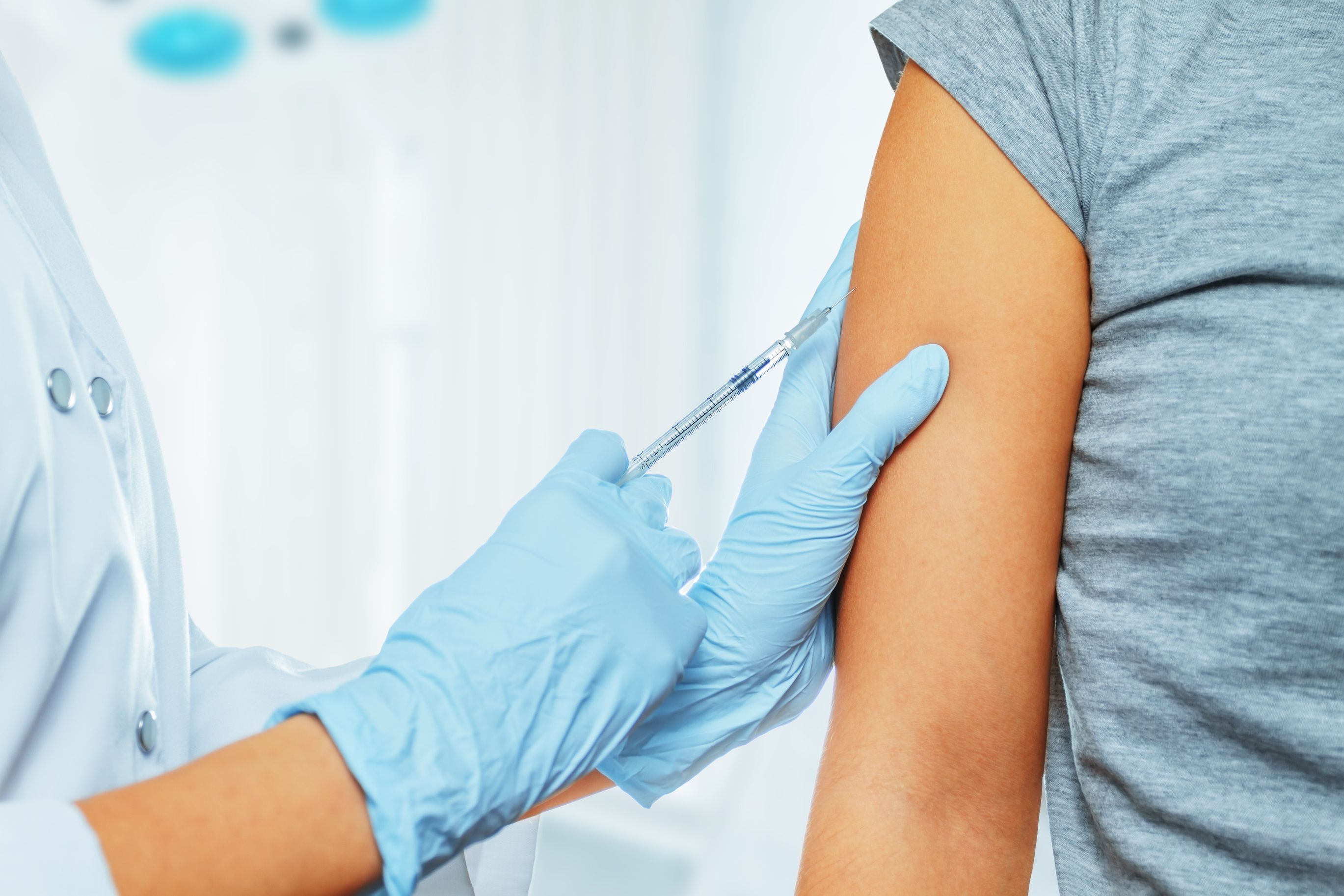
Examples of nonroutine vaccines are those required for travel. As international travel returns to prepandemic rates, travelers who need vaccinations for their destinations will likely consult their pharmacists for assistance. It is possible that some pharmacists may not have experience in administering vaccines that provide protection against yellow fever virus, Japanese encephalitis virus, cholera, rabies virus, and typhoid fever. However, many pharmacists have provided doses of vaccines intended for travel purposes for different indications, such as those that offer protection against hepatitis A; hepatitis B; measles, mumps, and rubella; meningococcal disease; and tetanus. 1 Although vaccination laws vary by state, pharmacists can generally administer all travel-related vaccines either through their prescriptive authority or a vaccine protocol in collaboration with a physician.
For pharmacists who are unfamiliar with travel health, continuing education courses are available on multiple platforms. 3 The first step in any travel vaccine consultation is gathering information from the patient. Recommendations will vary based on factors such as destination, duration of travel, lodging, altitude, and planned activities, among others. It should be noted that many travel health consultations also include prophylactic medications and behavioral advice.
The CDC provides a resource that allows health care providers to enter a traveler’s destination and view vaccine recommendations for that area. 4 This information changes based on current disease activity and other factors, such as seasonal variations in risk (eg, mosquitos are more prevalent in some areas during the rainy season). Although there are many resources for pharmacists to use when preparing travel vaccine recommendations, the CDC’s website is a common starting point.
When recommending and administering travel vaccines, pharmacists should consider that many vaccines require multiple doses before the traveler’s departure date. 1 Therefore, they should encourage patients who are taking trips to new or unfamiliar countries to have a travel health consultation at least 1 month before traveling. In some cases, accelerated dosing schedules are available for vaccines that are normally administered over a longer period. For example, it takes 6 months to be fully protected against hepatitis B when using traditional vaccine products and their dosing schedules. However, the time to effectiveness can be reduced to just 1 month using a 2-dose series of the recombinant,-adjuvanted hepatitis B vaccine (Heplisav-B; Dynavax) or accelerated dosing of the combination hepatitis A and hepatitis B vaccine (Twinrix; GSK). 5,6
About The Author
Adam James, PharmD, is manager of immunization and clinical programs at Rite Aid. In his role, he provides Rite Aid’s more than 1750 locations with updates, education, and best practices to ensure the success of these clinical programs.
Another consideration for pharmacists when recommending travel-related vaccines is that some countries require proof of vaccination for certain vaccines, such as the yellow fever vaccine. Importantly, only providers that have registered with their local jurisdiction’s department of health can administer the yellow fever vaccine. Some countries require all travelers to show proof of yellow fever vaccination before entering the country in the form of an International Certificate of Vaccination or Prophylaxis. 7 Other countries require proof of vaccination from travelers arriving from countries with a risk of yellow fever virus exposure. Yellow fever is most prevalent in African countries such as Burundi, the Gambia, Cameroon, Ghana, Sierra Leone, Guinea, Chad, and Sudan. 8 Pharmacists can help patients not only get vaccinated, but also help navigate situations for people visiting multiple countries, as the order of travel may be important if one of the countries is at high risk for yellow fever.
Community pharmacists are providing more vaccines than ever, and those related to travel health are no exception. Pharmacists who are familiar with these vaccines and the resources available to help create travel health recommendations will be better prepared to serve their patients’ needs and keep them protected while traveling.
Need travel vaccines? Plan ahead. CDC. Updated January 13, 2023. Accessed February 19, 2024. https://wwwnc.cdc.gov/travel/page/travel-vaccines
Weekly covid-19 vaccination dashboard. cdc. updated april 3, 2024. accessed april 3, 2024. https://www.cdc.gov/vaccines/imz-managers/coverage/covidvaxview/interactive/vaccination-dashboard.html, travel medicine. pharmacist’s letter. accessed february 19, 2024. https://pharmacist.therapeuticresearch.com/browse/resultsid=%7baa4e0ec7-2a02-4ece-90df-9cdd9a2504ad%7d&parentid=%7b9699b0e4-2b97-47aa-a093-045a928d8c5b%7d, travelers’ health. cdc. accessed february 19, 2024. https://wwwnc.cdc.gov/travel/, hepatitis b. cdc. updated november 8, 2022. accessed february 19, 2024. https://wwwnc.cdc.gov/travel/diseases/hepatitis-b#:~:text=it%20usually%20takes%206%20months,a%20and%20hepatitis%20b%20vaccine, twinrix. prescribing information. gsk; 2023. accessed february 19, 2024. https://gskpro.com/content/dam/global/hcpportal/en_us/prescribing_information/twinrix/pdf/twinrix.pdf, international certificate of vaccination or prophylaxis (icvp). cdc. updated october 13, 2023. accessed february 19, 2024. https://wwwnc.cdc.gov/travel/page/icvp#:~:text=yellow%20fever%20vaccination%20(travel)%20clinics,after%20the%20date%20of%20vaccination, yellow fever maps. cdc. updated january 15, 2019. accessed february 19, 2024. https://www.cdc.gov/yellowfever/maps/index.html.

This Skin Cancer Awareness Month, Remind Patients of the Prevention Basics
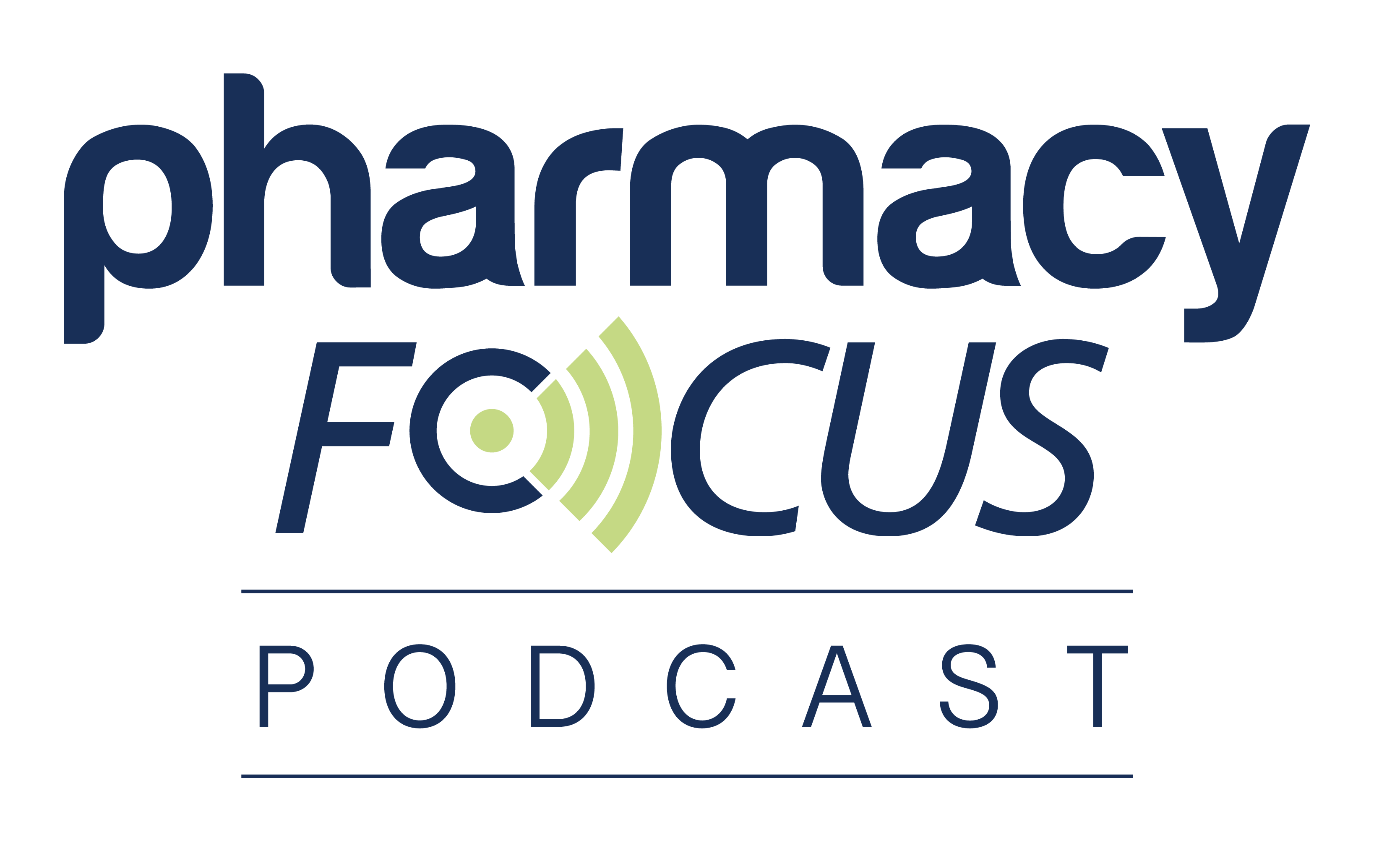
Pharmacy Focus: Community Pharmacy's Role in Social Determinants of Health
Products: May 2024
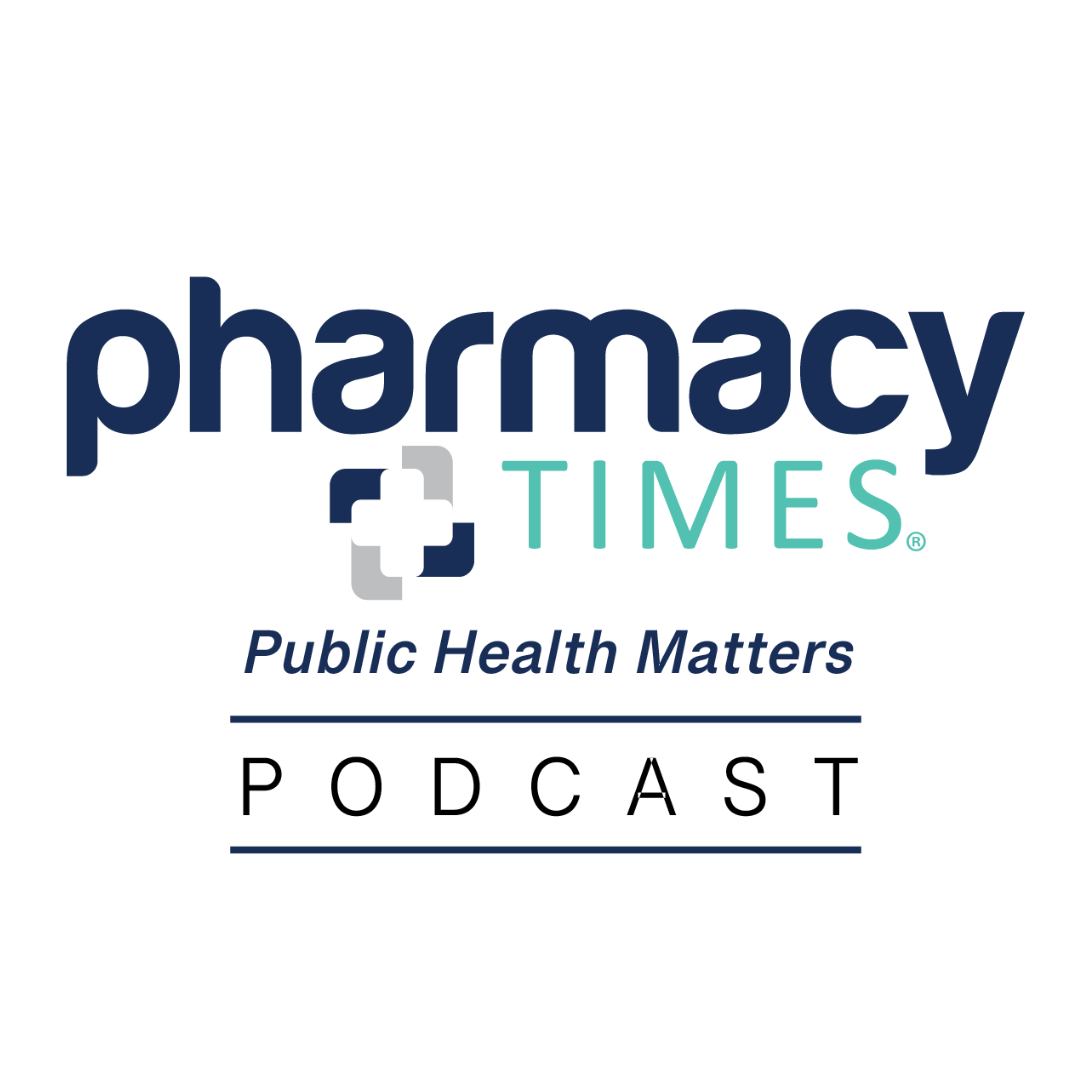
Public Health Matters: Entrepreneurship, MedsPLUS Consulting, and Reaching Marginalized Communities

Learning Telehealth Platforms Shows Benefit for Pharmacy Students
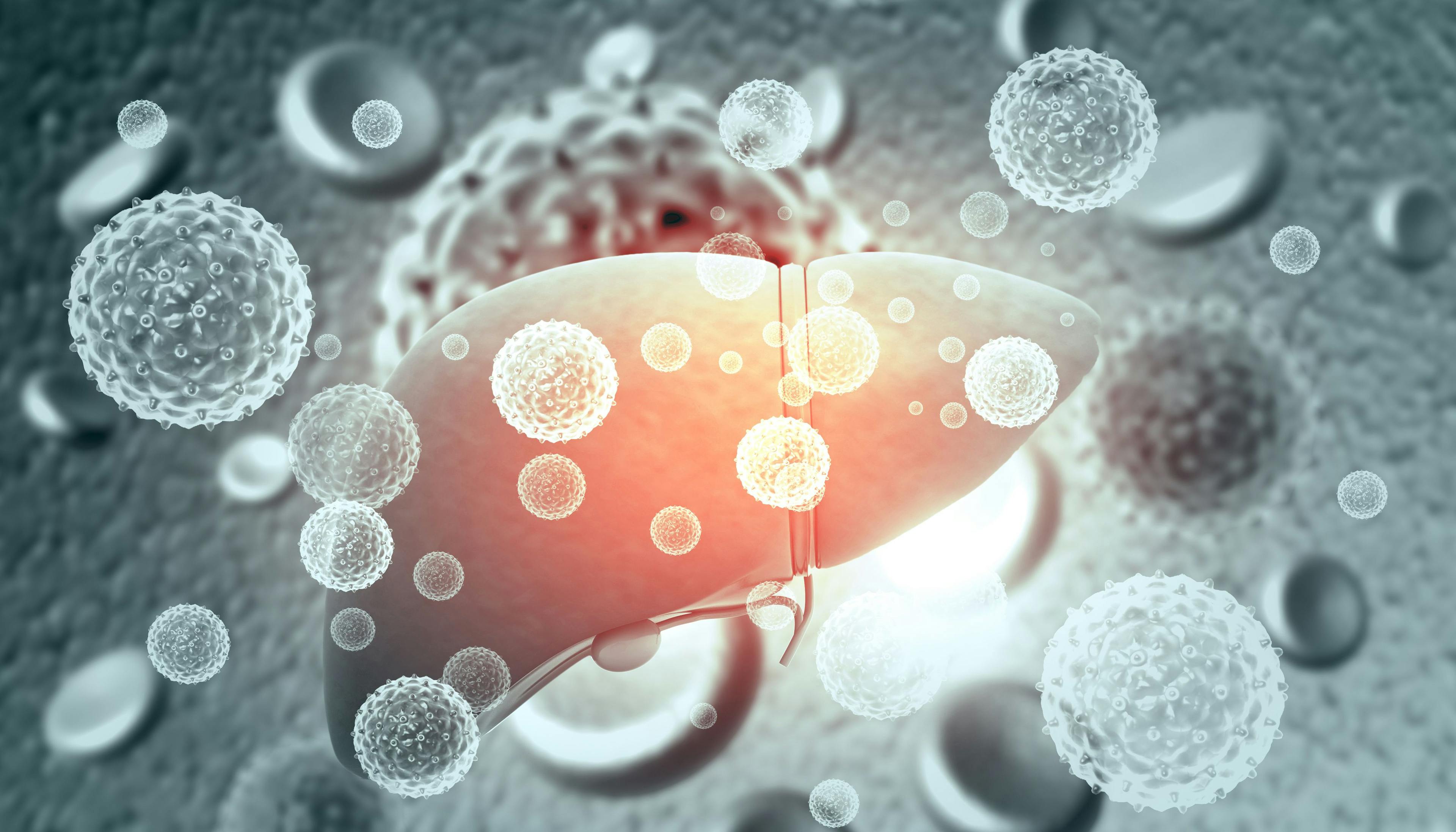
May is Hepatitis Awareness Month
2 Commerce Drive Cranbury, NJ 08512
609-716-7777

International travelers to the US will be able to skip proof of COVID vaccine, WH says

The Biden administration will lift the COVID-19 vaccine requirement for inbound international air travelers on Friday.
"As we continue to monitor the evolving state of COVID-19 and the emergence of virus variants, we have the tools to detect and respond to the potential emergence of a variant of high consequence," President Joe Biden said in a proclamation Tuesday. "Considering the progress that we have made, and based on the latest guidance from our public health experts, I have determined that we no longer need the international air travel restrictions that I imposed in October 2021."
Biden announced the change last week , along with the end of vaccine requirements for federal employees and contractors, foreign nationals at the land border and others. The requirement for air travelers will lift at midnight Thursday as the coronavirus public health emergency ends. Biden previously signed a bill ending the COVID national emergency in April.
So, what does that mean for travelers? Here's what we know.
Summer travel is expensive: Here's why flight prices heat up when the weather does
Learn more: Best travel insurance
Why are travel refunds taking so long? Here are some tips to get your money back
Is there still a vaccine requirement for international travelers coming to the US?
Not as of later this week.
Currently, all "non-U.S. citizen, non-U.S. immigrants traveling to the United States by air" must show proof of vaccination with limited exceptions, according to the Centers for Disease Control and Prevention's website .
Industry group the U.S. Travel Association, which had called on the Biden administration to end the vaccine requirement for inbound international visitors and argued the rule was an impediment to tourism, applauded the change when it was announced last week.
“Today’s action to lift the vaccine requirement eases a significant entry barrier for many global travelers, moving our industry and country forward," Geoff Freeman, the organization's President and CEO, said in a statement last week. He also called on the federal government to "ensure U.S. airports and other ports of entry are appropriately staffed with Customs and Border Protection officers to meet the growing demand for entry."
The U.S. lifted a requirement that air travelers coming from China show proof of a negative COVID test in March. The policy took effect in January amid a surge of cases in China.
The U.S. dropped its COVID testing rule for international flyers in June.
Do travelers need a vaccine to cross the Mexico or Canada borders to the US?
The Department of Homeland Security also said in a news release that it will no longer require non-U.S. travelers coming into the country by land or at ferry terminals to be fully vaccinated or show proof of their vaccination status.
Do US travelers need to be vaccinated against COVID to travel internationally?
That depends. Many destinations have dropped their vaccination and testing requirements for travel, though some still have rules in place. The Philippines, for example, still requires travelers to be fully vaccinated or show proof of a negative COVID test in order to visit, according to the U.S. Embassy in the Philippines .
AI, self-service are taking over travel: Will everything become a DIY experience?
The CDC also recommends travelers be up to date on their COVID vaccinations before leaving the country. The agency defines up to date as having one updated Pfizer-BioNTech or Moderna vaccine for people age 6 and up, which "protect against both the original virus that causes COVID-19 and the Omicron variant BA.4 and BA.5," according to its website .
Nathan Diller is a consumer travel reporter for USA TODAY based in Nashville. You can reach him at [email protected].
You are using an outdated browser. Upgrade your browser today or install Google Chrome Frame to better experience this site.
Destinations
Measles cases are increasing globally, including in the United States. The majority of measles cases imported into the United States occur in unvaccinated U.S. residents who become infected during international travel. A list of countries with confirmed measles outbreaks can be found on the Global Measles Travel Health Notice (THN) . Measles spreads rapidly in communities that are not fully vaccinated and may pose a risk to international travelers in places not included in the THN. CDC recommends all travelers get fully vaccinated against measles before traveling to any international destination.

If you need help finding travel information:
Message & data rates may apply. CDC Privacy Policy
Complete List of Destinations
- Afghanistan
- American Samoa
- Anegada (see Virgin Islands, British )
- Anguilla (U.K.)
- Antigua and Barbuda
- Austral Islands (see French Polynesia (France) )
⇧ Top
- Bahamas, The
- Barbuda (see Antigua and Barbuda )
- Bermuda (U.K.)
- Bora-Bora (see French Polynesia (France) )
- Bosnia and Herzegovina
- British Indian Ocean Territory (U.K.)
- Burkina Faso
- Burma (Myanmar)
- Caicos Islands (see Turks and Caicos Islands (U.K.) )
- Canary Islands (Spain)
- Cayman Islands (U.K.)
- Central African Republic
- Christmas Island (Australia)
- Cocos (Keeling) Islands (Australia)
- Congo, Republic of the
- Cook Islands (New Zealand)
- Côte d'Ivoire
- Curaçao
- Democratic Republic of the Congo
- Dominican Republic
- Dubai (see United Arab Emirates )
- Easter Island (Chile)
- El Salvador
- England (see United Kingdom )
- Equatorial Guinea
- Eswatini (Swaziland)
- Falkland Islands (Islas Malvinas)
- Faroe Islands (Denmark)
- French Guiana (France)
- French Polynesia (France)
- Galápagos Islands (see Ecuador )
- Gambia, The
- Gibraltar (U.K.)
- Greenland (Denmark)
- Grenadines (see Saint Vincent and the Grenadines )
- Guam (U.S.)
- Guernsey (see United Kingdom )
- Guinea-Bissau
- Holy See (see Italy )
- Hong Kong SAR (China)
- Isle of Man (see United Kingdom )
- Israel, including the West Bank and Gaza
- Ivory Coast (see Côte d'Ivoire )
- Jersey (see United Kingdom )
- Jost Van Dyke (see Virgin Islands, British )
- Liechtenstein
- Macau SAR (China)
- Madeira Islands (Portugal)
- Marquesas Islands (see French Polynesia (France) )
- Marshall Islands
- Martinique (France)
- Mayotte (France)
- Micronesia, Federated States of
- Montserrat (U.K.)
- Moorea (see French Polynesia (France) )
- Myanmar (Burma) (see Burma (Myanmar) )
- Netherlands, The
- New Caledonia (France)
- New Zealand
- Niue (New Zealand)
- Norfolk Island (Australia)
- North Korea
- North Macedonia
- Northern Ireland (see United Kingdom )
- Northern Mariana Islands (U.S.)
- Papua New Guinea
- Philippines
- Pitcairn Islands (U.K.)
- Puerto Rico (U.S.)
- Réunion (France)
- Rota (see Northern Mariana Islands (U.S.) )
- Rurutu (see French Polynesia (France) )
- Saint Barthelemy
- Saint Croix (see Virgin Islands, U.S. )
- Saint Helena (U.K.)
- Saint John (see Virgin Islands, U.S. )
- Saint Kitts and Nevis
- Saint Lucia
- Saint Martin
- Saint Pierre and Miquelon (France)
- Saint Thomas (see Virgin Islands, U.S. )
- Saint Vincent and the Grenadines
- Saipan (see Northern Mariana Islands (U.S.) )
- São Tomé and Príncipe
- Saudi Arabia
- Scotland (see United Kingdom )
- Sierra Leone
- Sint Eustatius
- Sint Maarten
- Society Islands (see French Polynesia (France) )
- Solomon Islands
- South Africa
- South Georgia and the South Sandwich Islands (U.K.)
- South Korea
- South Sandwich Islands (see South Georgia and the South Sandwich Islands (U.K.) )
- South Sudan
- Swaziland (Eswatini) (see Eswatini (Swaziland) )
- Switzerland
- Tahiti (see French Polynesia (France) )
- Timor-Leste (East Timor)
- Tinian (see Northern Mariana Islands (U.S.) )
- Tobago (see Trinidad and Tobago )
- Tokelau (New Zealand)
- Tortola (see Virgin Islands, British )
- Trinidad and Tobago
- Tubuai (see French Polynesia (France) )
- Turkmenistan
- Turks and Caicos Islands (U.K.)
- United Arab Emirates
- United Kingdom
- United States
- Vatican City (see Italy )
- Virgin Gorda (see Virgin Islands, British )
- Virgin Islands, British
- Virgin Islands, U.S.
- Wake Island
- Wales (see United Kingdom )
- Zanzibar (see Tanzania )
File Formats Help:
- Adobe PDF file
- Microsoft PowerPoint file
- Microsoft Word file
- Microsoft Excel file
- Audio/Video file
- Apple Quicktime file
- RealPlayer file
- Zip Archive file
Exit Notification / Disclaimer Policy
- The Centers for Disease Control and Prevention (CDC) cannot attest to the accuracy of a non-federal website.
- Linking to a non-federal website does not constitute an endorsement by CDC or any of its employees of the sponsors or the information and products presented on the website.
- You will be subject to the destination website's privacy policy when you follow the link.
- CDC is not responsible for Section 508 compliance (accessibility) on other federal or private website.
Official websites use .gov
A .gov website belongs to an official government organization in the United States.
Secure .gov websites use HTTPS
A lock ( ) or https:// means you've safely connected to the .gov website. Share sensitive information only on official, secure websites.
From August 1, 2024, Onward: What Your Dog Needs to Enter the United States
At a glance.
Starting on August 1, 2024, dogs entering or returning to the United States must meet new, specific requirements depending on where they have been in the 6 months before entering the U.S. and where they received their rabies vaccines (if required).
Requirements for all dogs
Requirements for dogs with a current and valid rabies vaccination administered in the united states.
- Requirements for foreign-vaccinated dogs that have been in a country with high risk of dog rabies within 6 months before entry
Requirements for dogs that have been ONLY in countries that are dog rabies-free or low-risk during the 6 months before entry
All dogs must:
- Be at least 6 months of age at time of entry or return to the United States
- This must have been implanted prior to any required rabies vaccination
- The microchip number must be documented on all required forms and in all accompanying veterinary records
- Dogs may not enter the United States if they are carrying a disease contagious to people.
- Isolation of the dog, veterinary examination, and additional testing, at the importer’s expense, may be required to determine if the dog has a contagious disease and prevent spread if the dog does not appear healthy upon arrival.

This form should be filled out online ideally 2-10 days before arrival; however, it can also be completed right before travel (even in line at the border crossing) if you have internet access. If the information on the form changes before the dog arrives, you must submit a new form and indicate you are making changes to an existing form. All information, including port of entry where the dog is arriving, must be correct at time of arrival.
- This form requires you to upload a clear photograph of the dog showing its face and body. Dogs that will be less than one year of age at time of arrival should have the photograph taken within 10 days before arrival.
- There is no charge to importers for submitting this form.
- Additional requirements for dogs with a current rabies vaccination administered in the United States
- Additional requirements for dogs that have been in a country at high-risk for dog rabies within the 6 months before entry and do NOT have appropriate documentation of current US-issued rabies vaccine
- Additional requirements for dogs that have been ONLY in countries that are dog rabies-free or low-risk in the 6 months before entry
Dogs that do not meet all entry requirements or do not have accurate and valid forms will be denied entry to the United States and returned to the country of departure at the importer’s expense. These requirements apply to all dogs, including service dogs and dogs that were born in the United States.
Specific requirements depend on whether the dog has been in a high-risk country for dog rabies in the past 6 months.
Dogs with a current rabies vaccination administered in the United States that have been in a high-risk country for dog rabies must:
- Meet all requirements in the “All Dogs” section above
- The Certification of U.S.-issued Rabies Vaccination form is required for the importation (re-entry) of U.S.-vaccinated dogs that have been in high-risk countries for dog rabies within the 6 months before re-entry into the United States.
- Please note, during the transition period, the importer may instead present a copy of the USDA endorsed export health certificate that was used to ship the dog from the United States, if that export health certificate documents the dog’s age (at least 6 months), the microchip number, and valid rabies vaccination administered in the United States. The rabies vaccination must be valid (not expired) on the date of return or the form will be invalid.
- Arrive at the location listed on the CDC Dog Import Form receipt (This can be any airport, land border crossing, or sea port but you must select this location when you complete the CDC Dog Import Form.)
Dogs with a current rabies vaccination administered in the United States that have NOT been in a high-risk country in the last 6 months must:
- A Certification of U.S.-Issued Rabies Vaccine form that was endorsed by USDA before the dog departed the United States; or
- Document a valid (unexpired) rabies vaccination administered in the United States (the form will be valid for the duration of the rabies vaccination (1 or 3 years)).
- Arrive at the location listed on the CDC Dog Import Form receipt (This can be any airport, land border crossing, or sea port but you must select this location when you complete the CDC Dog Import Form .)
Important information about the Certification of U.S.-Issued Rabies Vaccination Form
The Certification of U.S.-Issued Rabies Vaccination form must be completed before the dog departs the U.S. Before asking your veterinarian to complete this form, verify the following requirements will be met:
- Ensure your dog will be at least 6 months of age on date of return to the U.S.
- Have your dog microchipped with an International Organization for Standardization (ISO)-compatible microchip (implanted before any required rabies vaccinations)
- Ensure the veterinarian scans the dog for the ISO-compatible microchip and records the microchip number at the time of vaccine appointment. Rabies vaccines administered prior to microchip implantation will not be considered valid.
- Ensure the rabies vaccination will be valid for the entire duration of your travels. If your dog’s U.S.-issued rabies vaccination lapses while overseas and your dog has been in a high-risk country in the past 6 months, your dog will need to be revaccinated overseas and meet requirements for foreign-vaccinated dogs to return to the U.S., including having a rabies serology titer, arriving at a specific port of entry, and possible quarantine requirements.
- Your dog’s first rabies vaccination must be administered at least 28 days before travel.
- Ensure the veterinarian submits this form to the USDA for official endorsement through the VEHCS portal
- Your dog must travel with a printed copy of the official endorsed form upon your dog’s return to the United States if your dog has been in a high-risk country within the 6 months before returning to the U.S.
During the transition period, U.S.-vaccinated dogs that have been in a high-risk country in the past 6 months, may have either the Certification of U.S.-Issued Rabies Vaccination form or the USDA endorsed export health certificate for re-entry into the United States. Without one of these forms your dog will need to meet the requirements specific to the risk category of the countries where they have been in the 6 months before returning to the United States.
The export health certificate must document the dog’s age (at least 6 months), microchip number, and the rabies vaccination date. The rabies vaccine must be valid (not expired) on the date of return or the form will be invalid.
Requirements for foreign-vaccinated dogs that have been in a country with high risk of dog rabies within 6 months before entry
Dogs, including service dogs, that have been in a country at high-risk for dog rabies within the 6 months before entry and do not have appropriate documentation of current U.S.-issued rabies vaccine must:
- Meet all requirements in the “All Dogs” section
- Ensure the dog is microchipped with an International Organization for Standardization (ISO)-compatible microchip before receiving the rabies vaccination and the number is recorded on the veterinary documents or the vaccine will not be considered valid
- Verify the dog is at least 12 weeks (84 days) of age when vaccinated against rabies
- The dog must have a valid (i.e., non-expired) rabies vaccination. If it’s the dog’s first vaccination or if the dog’s vaccination coverage has lapsed, the vaccine must be administered at least 28 days before arrival to the United States.
- The Certification of Foreign Rabies Vaccination and Microchip form must be completed by your veterinarian AND endorsed by an official veterinarian in the exporting country.
- The blood sample for the rabies serology titer must have been drawn at least 30 days after the dog’s first valid rabies vaccination and at least 28 days before entry to the U.S.
- Dogs with a history of multiple valid rabies vaccinations administered after the microchip was placed may have the sample for the rabies serology titer drawn at any time after a rabies booster vaccination as long as the dog’s first vaccine was given at least 30 days before the blood sample was drawn and there has been no lapse in vaccine coverage. If a lapse occurs, the sample must be drawn at least 30 days after the valid booster vaccination was administered.
- The sample must be sent to a CDC-approved rabies serology laboratory . If there is no CDC-approved laboratory in your country, your veterinarian may draw the sample and send it internationally to a CDC-approved laboratory.
- Passing results must be obtained in order for a serology to be valid.
- Rabies serology titer results will be considered valid for the life of the dog as long as the dog’s rabies vaccination coverage does not lapse. If a lapse occurs, a new rabies serology titer will be required and that sample must be drawn at least 30 days after the new vaccination was administered.
- If the dog does not have a valid rabies serology titer, it will be required to be quarantined at a CDC-registered animal care facility for 28 days after the dog is revaccinated by the facility’s veterinarian.
- All foreign-vaccinated dogs that have been in a high-risk country in the previous 6 months must have a reservation for examination, verification of age, documents, and microchip number, and administration of a rabies booster vaccination at a CDC-registered animal care facility immediately upon arrival in the United States.
- Dogs that do not have a valid rabies serology titer must also have a reservation for quarantine. Dogs will be quarantined at the facility for 28 days at the importer’s expense after being revaccinated by the facility’s veterinarian.
- All CDC-registered animal care facility expenses, including exam, revaccination, and quarantine (if required), are the responsibility of the importer.
- The facility will need copies of all required documents prior to confirming your reservation.
- Ensure the dog meets any facility-specific requirements (contact facility for additional information).
- If after arrival the CDC-registered animal care facility determines that your documents are not valid or the dog’s microchip number, age, or description does not match the paperwork provided, the dog may be denied entry and returned to the country of departure at your expense.
- Dogs that have evidence of illness or are not healthy will be required to have testing to confirm they do not have contagious diseases before they will be eligible for release, which may extend the required quarantine period beyond 28 days. Any required testing or extended stay in quarantine will be at the importer’s expense, so please ensure dogs are healthy upon arrival (including no evidence of fleas, ticks, or skin diseases).
- Dogs must arrive to the U.S. at the airport where the CDC-registered animal care facility is located. This must be the location where the dog has a reservation.
- This must also be the airport listed on the CDC Dog Import Form
- Domestic flights or other forms of travel to other locations in the U.S. are not permitted until after the dog receives required follow-up services at the CDC-registered animal care facility and is cleared for entry.
- SERVICE DOGS ARRIVING BY SEA : Service dogs, as defined in 14 CFR 382.3, may arrive by sea if they meet the requirements in the “All Dogs” section, have a complete Certification of Foreign Rabies Vaccination and Microchip form and a valid rabies serology titer, and are traveling with their handler. Emotional support animals are not service animals under this definition.
Countries that are not on the list of countries at high risk for dog rabies are considered to be free of or low risk for dog-mediated rabies virus variant (DMRVV) (called dog rabies-free or low-risk countries on these webpages).
Dogs, including service dogs, that have been ONLY in dog rabies-free or low-risk countries during the 6 months before entry into the United States must:
- Certification of Foreign Rabies Vaccination and Microchip form, including the endorsement by an official veterinarian of the dog rabies-free or low-risk country where the dog has been located; AND EITHER (1) a valid rabies serology titer OR (2) veterinary records* (which list the microchip number) for the dog from the exporting country for the previous 6 months. The form must be completed within 30 days before arrival to the United States.
- Certification of U.S.-Issued Rabies Vaccination form that was endorsed by USDA before the dog departed the United States
- Is for the dog rabies-free or low-risk country where the dog’s return itinerary originated (the form will only be valid for 30 days if it does not contain rabies vaccination information), or
- Documents a valid (unexpired) rabies vaccination administered in the United States (the form will be valid for the duration of the rabies vaccination (1 or 3 years)).
- Certification of Dog Arriving from DMRVV-free or Low-Risk Country into the United States form endorsed by an official veterinarian in the exporting country; AND veterinary records* (which list the microchip number) for the dog from the exporting country for the 6 months before traveling to the U.S. The form must be completed within the 30 days before arriving to the United States.
- Foreign export certificate that documents the dog is at least 6 months of age, lists the dog’s International Organization for Standardization (ISO)-compatible microchip number, and has been endorsed by an official veterinarian of the exporting country; AND veterinary records* (which list the microchip number) for the dog from the exporting country for the previous 6 months
- Arrive at the location listed on the CDC Dog Import Form receipt (This can be any airport, land border crossing, or sea port but you must select it when you complete the CDC Dog Import Form .)
Any documentation that is not from the United States must be completed in the country where the dog’s travel originates. For example, if the dog’s documents were issued in France, the dog may not enter the U.S. via a land-border crossing from Mexico to the U.S.
*Examples of veterinary records that must accompany completed forms are European Union pet passports or proof of payment for veterinary services received in the exporting low-risk country for the previous 6 months. Records must include the dog’s microchip number.
For more information, see: Frequently Asked Questions on CDC Dog Importations
If you have questions or need more information, please contact CDC-INFO at (800) 232-4636.
- Travelers' Health
- Healthy Pets Healthy People
- Southern Border Health and Migration
- Port Health
- Division of Global Migration Health
To receive email updates about this page, enter your email address:
Exit Notification / Disclaimer Policy
- The Centers for Disease Control and Prevention (CDC) cannot attest to the accuracy of a non-federal website.
- Linking to a non-federal website does not constitute an endorsement by CDC or any of its employees of the sponsors or the information and products presented on the website.
- You will be subject to the destination website's privacy policy when you follow the link.
- CDC is not responsible for Section 508 compliance (accessibility) on other federal or private website.

IMAGES
COMMENTS
All international travelers should be fully vaccinated against measles with the measles-mumps-rubella (MMR) vaccine, including an early dose for infants 6-11 months, according to CDC's measles vaccination recommendations for international travel. Measles (Rubeola) - CDC Yellow Book. Rabies. Chile is free of dog rabies.
More. Learn about CDC's Traveler Genomic Surveillance Program that detects new COVID-19 variants entering the country. Sign up to get travel notices, clinical updates, & healthy travel tips. CDC Travelers' Health Branch provides updated travel information, notices, and vaccine requirements to inform international travelers and provide ...
TOURIST VISA REQUIRED: Not required for stays of 90 days or less (tourist passports only) VACCINATIONS: None. CURRENCY RESTRICTIONS FOR ENTRY: Foreigners who enter Chile as tourists must prove that they have sufficient daily funds of a minimum of $46 USD to cover their expenses. Additional information can be found here.
More details regarding what constitutes full vaccination are available on this page of the CDC website. Fully vaccinated travelers will continue to be required to show a pre-departure negative test taken within three (3) days of travel to the United States prior to boarding.
For the Covid vaccines validation in Chile you must: Step 1: go to mevacuno.gob.cl. Step 2: Create an account in the "Email" section. Step 3: Click over the "Create an account" link. This must be done with the e-mail address of each person who is going to travel. Step 4: Once you've created your account, go to "Validation" in the ...
Check with airlines and transit/destination countries for how COVID testing and vaccine requirements might impact travel. Assistance: U.S. Embassy Santiago, Chile. Phone number: +56 2 2330 3716 (8:30 A.M. to 5:00 P.M) and +56 2 2330 3000 (After business hours) Email address: [email protected]. Embassy website: https://cl.usembassy.gov/.
Chile has reported a successful immunization campaign with almost 87% of the eligible population fully vaccinated, according to the health ministry. When borders reopen, visitors will be permitted entry through dedicated airports in the capital Santiago, the beach resort of Iquique, and Antofagasta, the gateway to the Atacama Desert.
Inicio. Travel to Chile Plan. Updated the day 17 January, 2024. Entry Requirements. Frequently asked questions. Check here the Travel to Chile Plan for all the information on the requirements and protocols to enter the country.
Travelers over the age of 6 must be fully vaccinated with two doses of an approved vaccine and must upload their vaccination status to the Chilean health department. Approval of vaccination status ...
Health Alert - Department of State - Bureau of Consular Affairs (January 15, 2021) Location: Worldwide - The U.S. Centers for Disease Control and Prevention (CDC) Director has signed an order requiring all airline passengers traveling to the United States, including U.S. citizens and Lawful Permanent Residents (LPRs), to provide proof of a negative COVID-19 viral test or recovery from ...
This means that the request for a PCR test and random testing on entry into Chile is eliminated. In addition, you should know that a valid vaccination certificate will not be required at the time of entry into Chile. With this change in Chile's entry requirements, more than 3,500,000 foreign tourists are expected to arrive in 2023.
Travel Advisory. July 17, 2023. Chile - Level 2: Exercise Increased Caution. U C. Reissued with obsolete COVID-19 page links removed. Exercise increased caution in Chile due to crime and civil unrest. Country Summary: Street crime (e.g., muggings, pick-pocketing, theft) is common in Chile. Rates of violent crime, such as assaults, homicide ...
Chile Travel Facts. PDF. US State Dept Travel Advisory. ... Vaccinations. The CDC and WHO recommend the following vaccinations for Chile: hepatitis A, hepatitis B, typhoid, rabies, meningitis, polio, measles, mumps and rubella (MMR), Tdap (tetanus, diphtheria and pertussis), ...
Chile has one of the world's highest vaccination rates and has been hailed as a model for its response to the pandemic, having administered two doses to over 85% of the population.
The mass COVID-19 vaccination campaign started in February 2021, and by July 26, more than 24 million doses have been administered, which represents 63.07% of the total population fully vaccinated [9]. Countries with similar populations in the region have lower coverage, such as Ecuador (11.43%) or Guatemala (1.68%).
Despite Chile's Speedy Covid-19 Vaccination Drive, Cases Soar. Experts say Chile's government eased restrictions on travel, business and schools much too early, creating a false sense of ...
Vaccinations and health risks. At least 8 weeks before your trip check: Altitude sickness is a risk in parts of Chile. Read more about altitude sickness on TravelHealthPro. There are confirmed ...
However, travelers going to areas with ongoing outbreaks may consider getting a booster dose of yellow fever vaccine if it has been 10 years or more since they were last vaccinated. Certain countries might require you to get the vaccine; visit Travelers' Health for information on specific country requirements .
Delay travel if they are sick with fever and a rash. Passengers who have a measles diagnosis must not travel until a doctor clears them for travel. Vaccination Recommendations for International Travelers. CDC recommends that all people planning international travel, including cruise ship crew, be vaccinated.
The pretravel health consultation is an opportunity to administer routine vaccines that are recommended based on age and other individual characteristics, and travel medicine practitioners should therefore be familiar with the general principles of vaccination and immunoprophylaxis.
The risk for chikungunya for most U.S. travelers is low. However, some travelers are at increased risk for infection or more severe disease. Factors to assess when considering use of chikungunya vaccine include the likelihood of exposure to chikungunya virus, a traveler's risk factors for severe disease outcomes, and traveler preferences.
Over the past few years, especially through the various stages of the COVID-19 pandemic, community pharmacies have become the primary place for people to receive vaccines. 1 In fact, of the approximately 32.2 million doses of updated 2023-2024 COVID-19 vaccines administered in the US, community pharmacies have administered nearly 30 million as of March 9, 2024.2 With growing numbers of ...
The CDC also recommends travelers be up to date on their COVID vaccinations before leaving the country. The agency defines up to date as having one updated Pfizer-BioNTech or Moderna vaccine for ...
Vaccination for international travelers. People who plan to travel internationally should make sure they are fully vaccinated against polio before departure. ... CDC recommends that all infants and children in the United States are vaccinated against polio with 4 doses of IPV given at ages 2 months, 4 months, 6-18 months, and 4-6 years. ...
Destinations. Measles cases are increasing globally, including in the United States. The majority of measles cases imported into the United States occur in unvaccinated U.S. residents who become infected during international travel. A list of countries with confirmed measles outbreaks can be found on the Global Measles Travel Health Notice (THN).
The CDC website offers travel checklists for US-vaccinated dogs and foreign-vaccinated dogs from high-risk ... "If your dog's rabies vaccination expires before you get your dog a booster ...
Visit a veterinarian to get your dog its rabies vaccination (or booster) before travel. Rabies vaccination is not required if the dog has been only in dog rabies-free or low-risk countries for 6 months, but is strongly recommended. It may also be required by the U.S. state or territory to which the dog is traveling. 30 days before travel